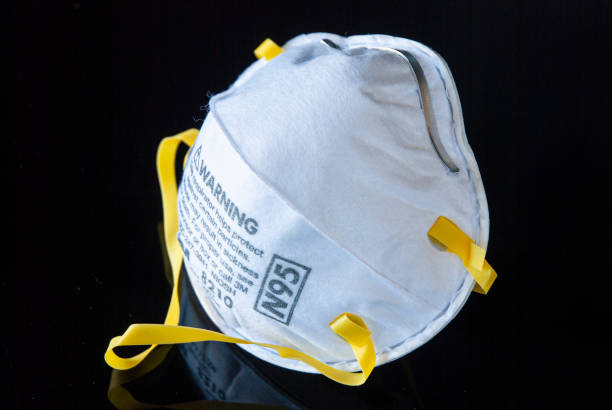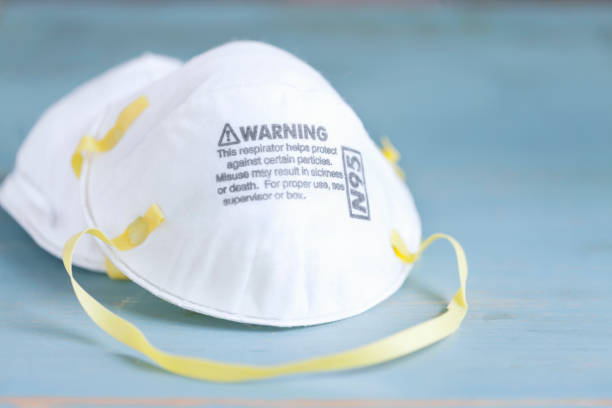Given the number of professionals who advise them as providing excellent protection against omicron, N95 masks are a popular item right now. And while though many epidemiologists and public health professionals have long urged individuals to use respirator N95 masks, it wasn’t until recently that the Centers for Disease Control and Prevention (CDC) changed its recommendations on N95 masks: Last Monday, the organization amended the website to indicate that these respirators are the recommended option (and that they are not in short supply, as they were earlier in the pandemic).
The CDC states that although all N95 masks and respirators provide some amount of protection, correctly fitting respirators offer the maximum level. A respirator may provide a greater degree of protection than a cloth or procedural mask if worn correctly the whole time it is in use and has superior filtration.
You’ll be happy to hear that the CDC also provided further information for the general public on selecting the best N95 and KN95 masks—as well as useful tips for enhancing the fit of their N95 masks Australia—given the agency’s focus on a good fit. Here are a few of the best advice.

N95 and KN95 respirator mask recommendations
1. Verify that you have the genuine article
Genuine N95s and KN95s will fit and perform better, first and foremost. According to SELF, there have been problems with fake N95 masks being sold to customers and even hospitals. Consumers may get a plethora of useful information on this topic at the National Institute for Occupational Safety and Health (NIOSH), a branch of the Centers for Disease Control and Prevention (CDC) and the agency that certifies respirators. NIOSH maintains a list of authorized N95 producers, a list of imitation N95 masks, instructions on how to tell whether a mask is real (such as searching for the “NIOSH” stamp and an approval TC number), and telltale indicators of fakes (such as misspellings or a lack of markings). More information on selecting respirators and where to acquire them may be found here. You can read more about Using these tips when dealing with N95 masks by visiting here http://vaccinationdebate.net/use-these-tips-when-dealing-with-n95-masks/
2. Select the proper mask
Since not all respirators fit the same, the CDC advises choosing one that does and that seals properly. NIOSH advises that you look for respirator N95 masks that are the same brand, model, and size, if available if you have ever used one that fits you well (consider there being no gaps). If not, you may need to try out a few different goods before deciding which one is the greatest fit.

3. Check to see if anything is blocking the path
NIOSH suggests being mindful of facial hair, hair, glasses, and jewelry that may possibly affect where your respirator is placed and how well it fits. (For example, eliminating bulky earrings or nose piercings, tying back your hair, shaving your beard, putting on your spectacles after the mask, etc.) According to the CDC, facial hair in particular might lead to air gaps while using respirators.
4. Comply with the guidelines
You don’t want to toss this particular set of instructions away right away! You may use the mask correctly by carefully following the manufacturer’s instructions that were included with it. For several NIOSH-approved devices, the CDC has provided the manufacturer’s instructions in case you did throw away the instructions.
5. Apply it correctly
Although you should adhere to the directions that come with your specific mask, this is the overall concept: Your chin and nose should first be covered by the respirator. The lower strap (if it has two straps) should be fastened around the neck, just below the ear, after pulling the top strap over your head and positioning it at the top rear of your head. Finally, mold the metal nose clip on your mask, if it has one, to the sides of your nose by pressing downward on it with your fingers. Check out the NIOSH visual instructions and video for help putting on and ensuring the fit of your respirator.
7. Verify the seal
This is crucial: According to the CDC, in order for a respirator mask to be effective, it must tightly seal to the user’s face. Genuine N95 masks are so called because, when worn correctly, they remove at least 95% of airborne particles.
NIOSH offers instructions for inspecting your respirator’s seal (as well as helpful graphics). First, rapidly inhale while placing both hands over the center of the respirator. When you do this, the respirator should adhere firmly to your face. After that, cover the respirator with both hands, including the sides, and exhale to check for air leaks in your hands. You may reposition the nosepiece so that it is flush against your face if the leak is around the region of the nose. Adjust the straps to narrow the gap if the leak is near the edges, then recheck the seal. If necessary, repeat.

Advice for using textile and surgical masks
N95 masks for respirators provide the best protection. However, any mask is better than none at all. If you presently only have access to surgical or cotton masks (ideally multilayered ones), there are still methods to make them more comfortable. By reducing covering gaps where air particles may seep in or out, the objective is still to produce a secure fit. Click here to read about Coronavirus (COVID-19) – Face masks: How they protect you and when to use them.
1. Inhale and exhale to verify the fit
Specifically focusing on any airflow behind your eyes or on the sides of your face, the CDC advises cupping your hands around the mask’s outer borders to check for gaps. By taking a few breaths, you may check the mask’s safety. According to the CDC, a mask is properly fitted if, when you inhale, warm air enters through the front and you can maybe see the mask being slightly pushed in and out with each breath.
2. Use a brace or mask fitter
Using a mask fitter or brace, which is placed over a disposable or cloth mask to reduce any gaps at the edges, is another option to increase fit.
3. Change the nasal piece
Try to use disposable N95 masks with nose wire, and a pliable metal strip around the top advises the CDC. To make the wire fit more snugly over your nose, you may shape it.
4. A two-mask
Additionally, there is always the tried-and-true double masking method, which involves wearing a disposable mask over a well-fitted fabric mask. (According to the CDC, don’t bother using two surgical N95 masks—it won’t make the fit better.)